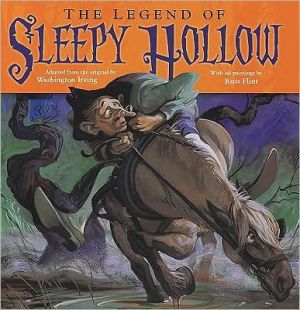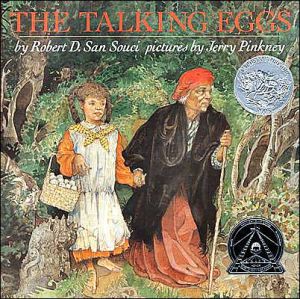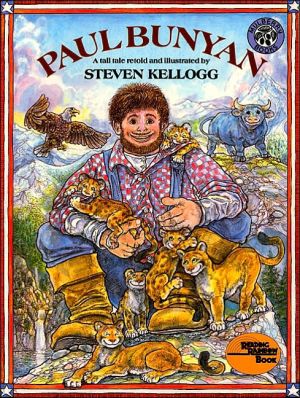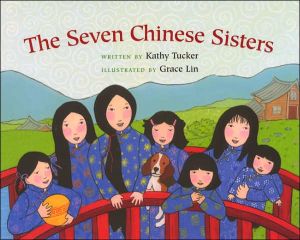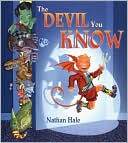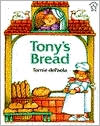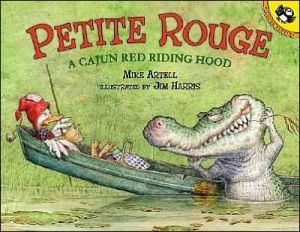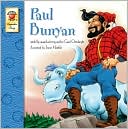The Legend of Sleepy Hollow
Tor Classics are affordably-priced editions designed to attract the young reader. Original dynamic cover art enthusiastically represents the excitement of each story. Appropriate "reader friendly" type sizes have been chosen for each title--offering clear, accurate, and readable text. All editions are complete and unabridged, and feature Introductions and Afterwords.\ \ This edition of The Legend of Sleepy Hollow includes an Introduction and Afterword by Charles L. Grant.\ \ Sleepy Hollow is...
Search in google:
Since this story's first appearance in 1820, generations of readers, young and old, have thrilled to the headless horseman galloping through the haunted woods of Sleepy Hollow. The rollicking tale of Ichabod Crane and his ill-fated courtship of Katrina Van Tassel has proven irresistible to illustrators. Now Michael Garland brings his trademark realism to this immortal classic with paintings that are as crisp and clear as a Halloween night in Sleepy Hollow.Publishers Weekly"Paintings by Grandma Moses's great-grandson make a striking match for the classic story," said PW. Ages 5-up. (Aug.) Copyright 1999 Cahners Business Information.
The Author's Account of Himself\ \ I am of this mind with Homer, that as the snaile that crept out of her shel was turned eftsoones into a Toad, and thereby was forced to make a stoole to sit on; so the traveller that stragleth from his owne country is in a short time transformed into so monstrous a shape that he is faine to alter his mansion with his manners and to live where he can, not where he would. \ \ I was always fond of visiting new scenes and observing strange characters and manners. Even when a mere child I began my travels and made many tours of discovery into foreign parts and unknown regions of my native city; to the frequent alarm of my parents and the emolument of the town cryer. As I grew into boyhood I extended the range of my observations. My holy day afternoons were spent in rambles about the surrounding country. I made myself familiar with all its places famous in history or fable. I knew every spot where a murder or robbery had been committed or a ghost seen. I visited the neighbouring villages and added greatly to my stock of knowledge, by noting their habits and customs, and conversing with their sages and great men. I even journeyed one long summer's day to the summit of the most distant hill, from whence I stretched my eye over many a mile of terra incognita, and was astonished to find how vast a globe I inhabited.\ \ This rambling propensity strengthened with my years. Books of voyages and travels became my passion, and in devouring their contents I neglected the regular exercises of the school. How wistfully would I wander about the pier heads in fine weather, and watch the parting ships, bound to distant climes. With what longing eyes would Igaze after their lessening sails, and waft myself in imagination to the ends of the earth.\ \ Further reading and thinking, though they brought this vague inclination into more reasonable bounds, only served to make it more decided. I visited various parts of my own country, and had I been merely a lover of fine scenery, I should have felt little desire to seek elsewhere its gratification, for on no country have the charms of nature been more prodigally lavished. Her mighty lakes, like oceans of liquid silver; her mountains with their bright aerial tints; her valleys teeming with wild fertility; her tremendous cataracts thundering in their solitudes; her boundless plains waving with spontaneous verdure; her broad deep rivers, rolling in solemn silence to the ocean; her trackless forests, where vegetation puts forth all its magnificence; her skies kindling with the magic of summer clouds and glorious sunshine-no, never need an American look beyond his own country for the sublime and beautiful of natural scenery.\ \ But Europe held forth the charms of storied and poetical association. There were to be seen the masterpieces of art, the refinements of highly cultivated society, the quaint peculiarities of ancient and local custom. My native country was full of youthful promise; Europe was rich in the accumulated treasures of age. Her very ruins told the history of times gone by, and every mouldering stone was a chronicle. I longed to wander over the scenes of renowned achievement-to tread as it were in the footsteps of antiquity-to loiter about the ruined castle-to meditate on the falling tower-to escape in short, from the commonplace realities of the present, and lose myself among the shadowy grandeurs of the past.
Biographical NoteIntroductionPreface to the Revised EditionThe Author's Account of Himself3The Voyage6Roscoe12The Wife18Rip Van Winkle25English Writers on America42Rural Life in England50The Broken Heart57The Art of Book Making62A Royal Poet68The Country Church81The Widow and Her Son86A Sunday in London93The Boar's Head Tavern, East Cheap96The Mutability of Literature106Rural Funerals116The Inn Kitchen127The Spectre Bridegroom129Westminster Abbey143Christmas158The Stage Coach163Christmas Eve169Christmas Day180The Christmas Dinner192London Antiques205Little Britain211Stratford-on-Avon224Traits of Indian Character242Philip of Pokanoket252John Bull267The Pride of the Village277The Angler285The Legend of Sleepy Hollow293L'Envoy321AppSleepy Hollow325Notes337Reading Group Guide357
\ Publishers Weekly - Publisher's Weekly\ THE LEGEND OF SLEEPY HOLLOW Washington Irving, illus. by Michael Garland. Boyds Mills, $8.95 ISBN 1-56397-605-6. Full-page oil paintings illustrate this unabridged edition of the classic spine-tingler. All ages. (Sept.)\ \ \ \ \ Children's Literature - Susie Wilde\ Kelley makes a significant contribution to picture books for young adults with his skillful rendition of Irving's classic The Legend of Sleepy Hallow. Kelley drew his inspiration from the painters of the late 18th century. He uses style, color and light to reflect the tones of the Flemish masters and revive the Hudson Valley life of the early Dutch settlers. Green predominates, giving a woodsy feel while creating a strong sense of setting and time. Kelley also adopts the illustrative vision of the 1700's where he depicts a horse galloping with front and back legs extended, as they were in the period (artists didn't have photography to show them that a horse doesn't gallop that way). All these things add to the feeling of the period.\ \ \ School Library JournalGr 5 Up- Grimly's interpretation of Irving's classic features quirky, creepy artwork that is strange in all the right ways. Calling to mind R. Crumb's crosshatched, wild-eyed, weirdly proportioned characters, Grimly's Ichabod Crane and the other townspeople are (predictably) grim caricatures. To cast the town in a perpetual twilight, the artist relies on a muted palette of grays, browns, tans, and oranges, which provides ample range and visual variety. The art and the text are not exactly symbiotic; Irving's prose, even with a few modifications, is simply too dense for modern readers. Youngsters may find themselves reading the text and examining the art separately, rather than absorbing both at the same time. More heavily graphic than an illustrated story, but still not quite a graphic novel, and equally at home in juvenile or young adult sections, this inventive but faithful adaptation deserves shelf space in most libraries.-Catherine Threadgill, Charleston County Public Library, SC\ Copyright 2006 Reed Business Information.\ \ \ \ \ School Library JournalGr 5-8-- An unabridged version of the classic tale of Ichabod Crane, his affection for the wealthy and beautiful Katrina Van Tassel, and his confrontation with the Headless Horseman. Despite Irving's outmoded narrative style, this is still an excellent ghost story that combines appropriate amounts of humor and terror while integrating Germanic legend with New England folklore, specifically that of New York State. Garland's realistic oil paintings are either portraitures or landscapes. The former are reminiscent of Barry Moser's work, while the latter resemble those by Thomas Locker. While these illustrations act as a sophisticated balance to Irving's wordy narrative, they do not consistently evoke the mood of Arthur Rackham's interpretation (1990). In her retelling for younger children (1987, both Morrow), Diane Wolkstein avoids the African-American stereotypes that Irving used for ``comic relief'' and concentrates on telling a good story, eliminating the complicated and archaic language of the period. All in all, this new version is useful where additional copies of the unabridged edition are needed. --Andrew W. Hunter, Public Library of Charlotte and Mecklenburg, Charlotte, NC\ \ \ \ \ BooknewsThe unabridged text of Washington Irving's classic folktale is illustrated by Gary Kelley's evocative color chalk drawings and b&w gravestone rubbings. 8x13". Annotation c. Book News, Inc., Portland, OR (booknews.com)\ \ \ \ \ Carolyn PhelanMany folk-art paintings illustrate this simplified retelling of Washington Irving's "Legend of Sleepy Hollow". Varied in size from small vignettes to double-page spreads, the colorful paintings are reminiscent of the works of Moses' great-grandmother, better known as Grandma Moses. A large-format picture book that will fill a need in some libraries.\ \ \ \ \ Kirkus ReviewsAbridged but not rewritten, the classic tale is decorated with a plethora of very small, comically gothic cartoons that add an air of spooky grotesquerie. An overall color scheme of pale browns and oranges adds a properly autumnal air to Sleepy Hollow's knobby woodlands, and the supporting cast includes nearly as many ghosts, toothy imps and the like as it does human figures. Grimly's not much for verisimilitude-party guests at the Van Tassels include African-Americans, and there's a glimpse of a generic Native American earlier on-but burly "rantipole hero" Brom Bones looks rightly massive next to the exaggeratedly gawky figure of Ichabod Crane. The Headless Horseman not only sports a particularly eerie-looking twig between its shoulders but rides a red-eyed, demonic steed, and in three views on the final page the decayed schoolhouse has a decidedly haunted air. Still, this is not a particularly scary rendition, and because its text is chopped into scattered, easily digestible passages tucked between or inside the panels, it may have more appeal to less-able readers than full versions. (Fantasy. 10-12)\ \
